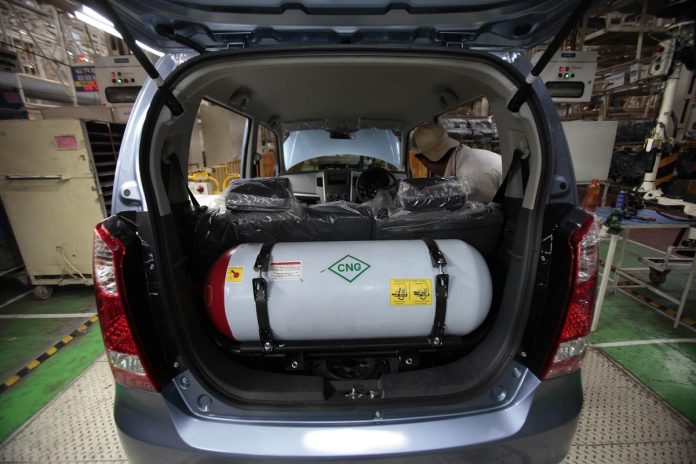Snapshot
Hitherto, vehicles which met the emission norms of up to BS-IV were allowed for CNG retrofitment.
Now, one can retrofit BS-VI petrol cars with CNG kits, which can reduce the fuel expenditure by almost 40 to 50 per cent.
Now, one can retrofit BS-VI petrol cars with CNG kits, which can reduce the fuel expenditure by almost 40 to 50 per cent, a move being considered to bring huge relief to the common man from the high expenditure on petrol.
The Road Transport Ministry has issued a draft notification for setting the emission and other norms for such retrofitment. Officials said the demand was felt for some time as, currently, only vehicles complying with the BS-VI emission norms are being sold across the country.
As of now, vehicles which meet the emission norms of up to BS-IV are allowed for CNG retrofitment. The Ministry has also introduced the Fire Alarm System and Fire Protection System in the passenger compartment in buses through an amendment in the AIS (Automotive Industry Standard)-135 for Type III buses.
Type III vehicles are those designed and constructed for long distance passenger transport, for seated passengers and school buses.
Since this is a green fuel, the government has proposed the retrofitment of CNG kits in vehicles of engine capacity up to 1500 CC; it will cover all cars and also some of the SUVs.
The change was necessary, considering that it’s mandatory for commercial vehicles plying in Delhi and its suburbs to be on CNG.
The Ministry, in the draft notification, has said this will be allowed for vehicles that have gross vehicle weight (GVW) of up to 3.5 tonnes and the type approvals for vehicles retrofitted with CNG kits will be valid for three years and such approval will be renewed for every three years at a time.
Industry sources said the retrofitment of CNG in such vehicles kits could be around Rs 50,000 per vehicle, but the owners will recover the account quickly due to saving from fuel cost.
At present, fire detection, alarm and suppression systems are notified for fires originating from the engine compartment, as per AIS-135. Studies on fire incidents indicate that injuries to passengers are mainly due to heat and smoke in the passenger compartment.
These injuries can be prevented if the heat and smoke in the passenger compartment is controlled by providing an additional evacuation time to occupants by thermal management during fire incidents.
A water mist-based active fire protection system and a standalone fire alarm system for buses has been designed to manage the temperature in the passenger compartment within 50 degrees centigrade.
This amendment to the standard has been undertaken in consultation with stakeholders and experts from the Centre for Fire Explosive and Environment Safety (CFEES), a DRDO establishment, working in the area of fire risk assessment, fire suppression technologies, modeling and simulation.


